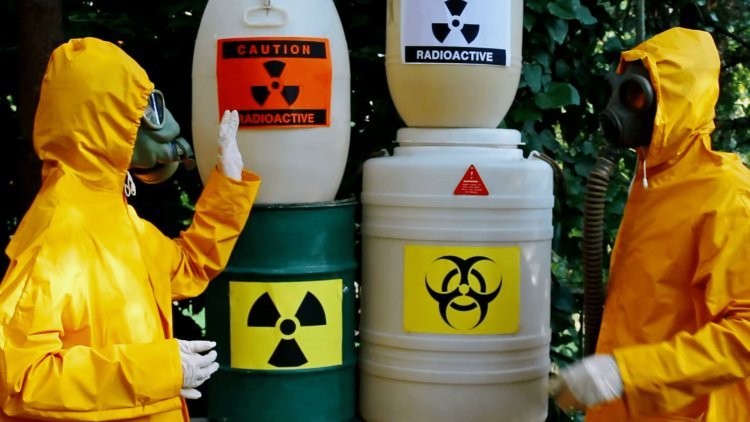How to Prevent Electrical Hazards in Chemical Plants?

Chemical plants are intricate environments where numerous processes intertwine to produce various substances crucial for industries worldwide. Within these facilities, electrical systems play a pivotal role in powering machinery, controlling processes, and facilitating communication. However, the integration of electrical components also poses significant hazards, demanding vigilant safety measures to mitigate risks effectively. This article explores into the importance of preventive measures, highlighting the relevance of an IOSH Course in fostering a culture of safety within chemical plants.
Understanding the Risks
Electrical hazards in chemical plants encompass a spectrum of potential dangers, ranging from electrocution to fires and explosions. The combination of volatile substances and electrical equipment creates an environment prone to accidents if not managed diligently. Faulty wiring, equipment malfunction, and inadequate maintenance are common catalysts for electrical incidents, underscoring the necessity of proactive risk assessment and mitigation strategies.
Identifying Vulnerabilities
1. Equipment Inspection and Maintenance
Regular inspection and maintenance of electrical equipment are fundamental in preempting hazards. Aging infrastructure, worn-out components, and environmental factors can compromise the integrity of electrical systems, amplifying the risk of accidents. Implementing a structured maintenance regime, coupled with periodic assessments, ensures early detection of potential issues, averting catastrophic consequences.
2. Training and Competency Development
Empowering personnel with the requisite knowledge and skills is paramount in fostering a safety-conscious workforce. Enrolling employees in an IOSH Course equips them with comprehensive training on hazard identification, risk assessment, and control measures specific to chemical plant environments. Through interactive learning modules and practical demonstrations, participants gain insights into best practices, enhancing their ability to respond effectively to electrical hazards.
Implementing Safety Protocols
1. Risk Assessment and Management
Conducting thorough risk assessments is imperative in delineating potential hazards and formulating appropriate control measures. By adopting a systematic approach, chemical plants can identify high-risk areas, implement engineering controls, and establish emergency response protocols. Regular reviews and updates to risk management strategies ensure alignment with evolving operational dynamics, bolstering overall safety resilience.
2. Compliance with Regulatory Standards
Adherence to regulatory standards serves as a cornerstone in ensuring the safety and integrity of electrical systems within chemical plants. Compliance with stipulated guidelines and industry best practices mitigates legal liabilities while fostering a culture of accountability. Engaging in an IOSH Course facilitates comprehension of regulatory requirements, enabling personnel to proactively address compliance gaps and uphold safety standards.
Enhancing Emergency Preparedness
1. Emergency Response Planning
Effective emergency response planning is indispensable in minimizing the impact of electrical incidents. Establishing clear protocols, delineating roles and responsibilities, and conducting regular drills are instrumental in fortifying preparedness. Integration of technological solutions, such as automated alarm systems and remote monitoring, augments response capabilities, enabling swift intervention during emergencies.
2. Continual Improvement and Training
Continuous improvement is integral to maintaining the efficacy of safety protocols within chemical plants. Regular training sessions, including refresher courses facilitated by an IOSH Course, reinforce safety awareness and instill a proactive mindset among employees. Encouraging feedback loops and conducting post-incident analyses foster a culture of learning, driving iterative enhancements to safety practices.
Addressing Financial Considerations
1. Budget Allocation for Safety Measures
Allocating financial resources towards safety initiatives is a prudent investment for chemical plants. While concerns regarding IOSH Course fees may arise, the long-term benefits outweigh the initial expenditure. A comprehensive understanding of safety principles gained through the course empowers employees to avert costly accidents, minimize downtime, and safeguard the reputation of the organization.
2. Cost-Benefit Analysis
Conducting a comprehensive cost-benefit analysis elucidates the tangible and intangible returns associated with safety investments. Beyond mitigating direct costs stemming from accidents, such as property damage and medical expenses, prioritizing safety cultivates a conducive work environment, fostering employee morale and productivity. Factoring in potential savings and operational efficiencies underscores the value proposition of investing in safety measures.
Conclusion
In conclusion, the prevention of electrical hazards in chemical plants necessitates a multifaceted approach encompassing risk assessment, safety protocols, and continuous training. The role of an IOSH Course in cultivating a safety-centric culture cannot be overstated, equipping personnel with the knowledge and skills essential for mitigating risks effectively. By prioritizing safety, chemical plants can uphold operational continuity, protect assets, and, most importantly, ensure the well-being of their workforce.
What's Your Reaction?










![Wireless Connectivity Software Market Size, Share | Statistics [2032]](https://handyclassified.com/uploads/images/202404/image_100x75_661f3be896033.jpg)



